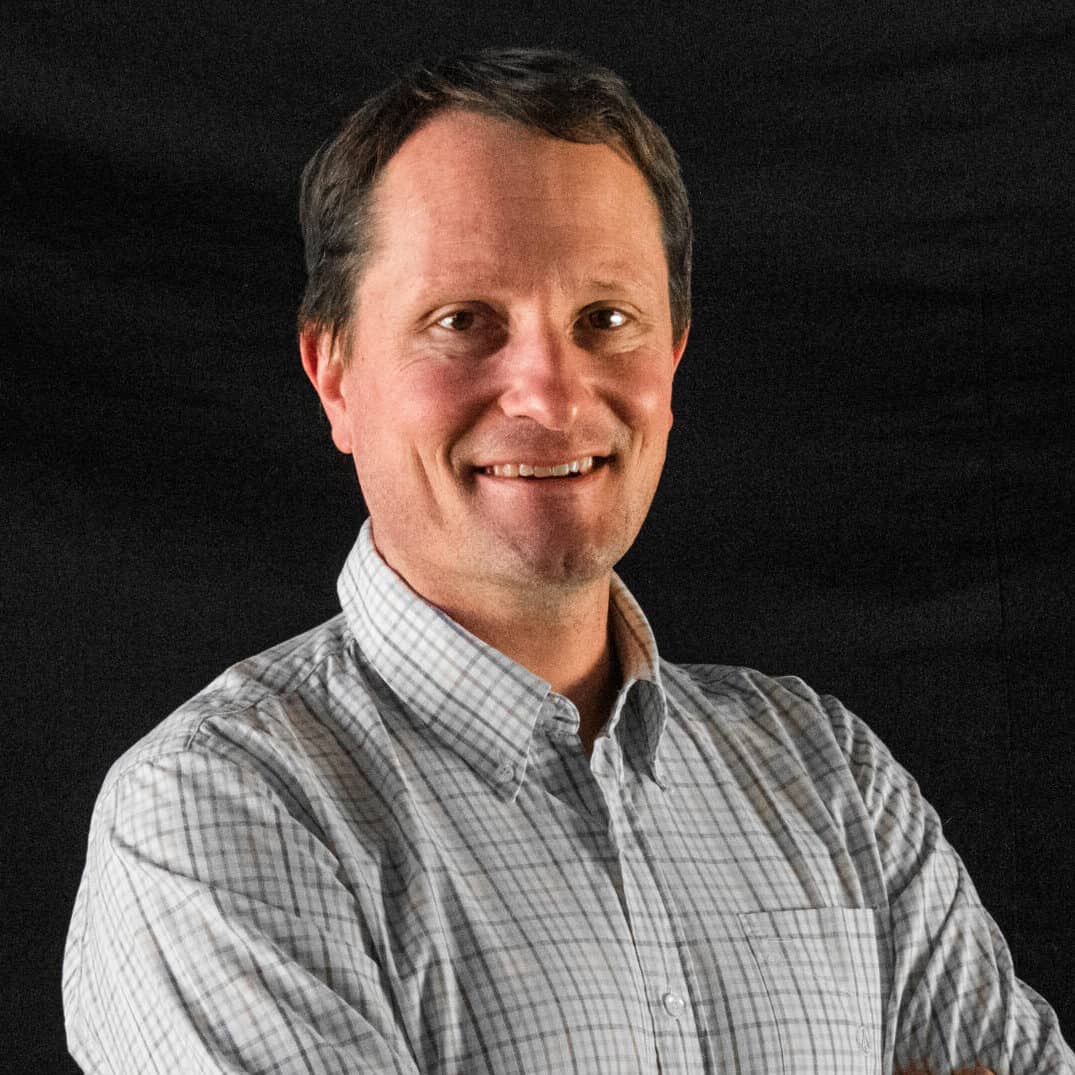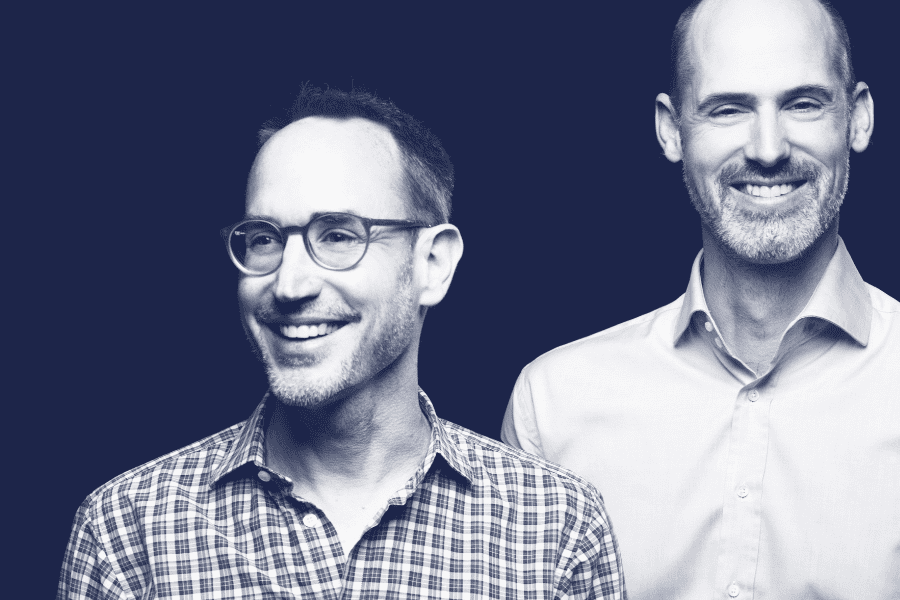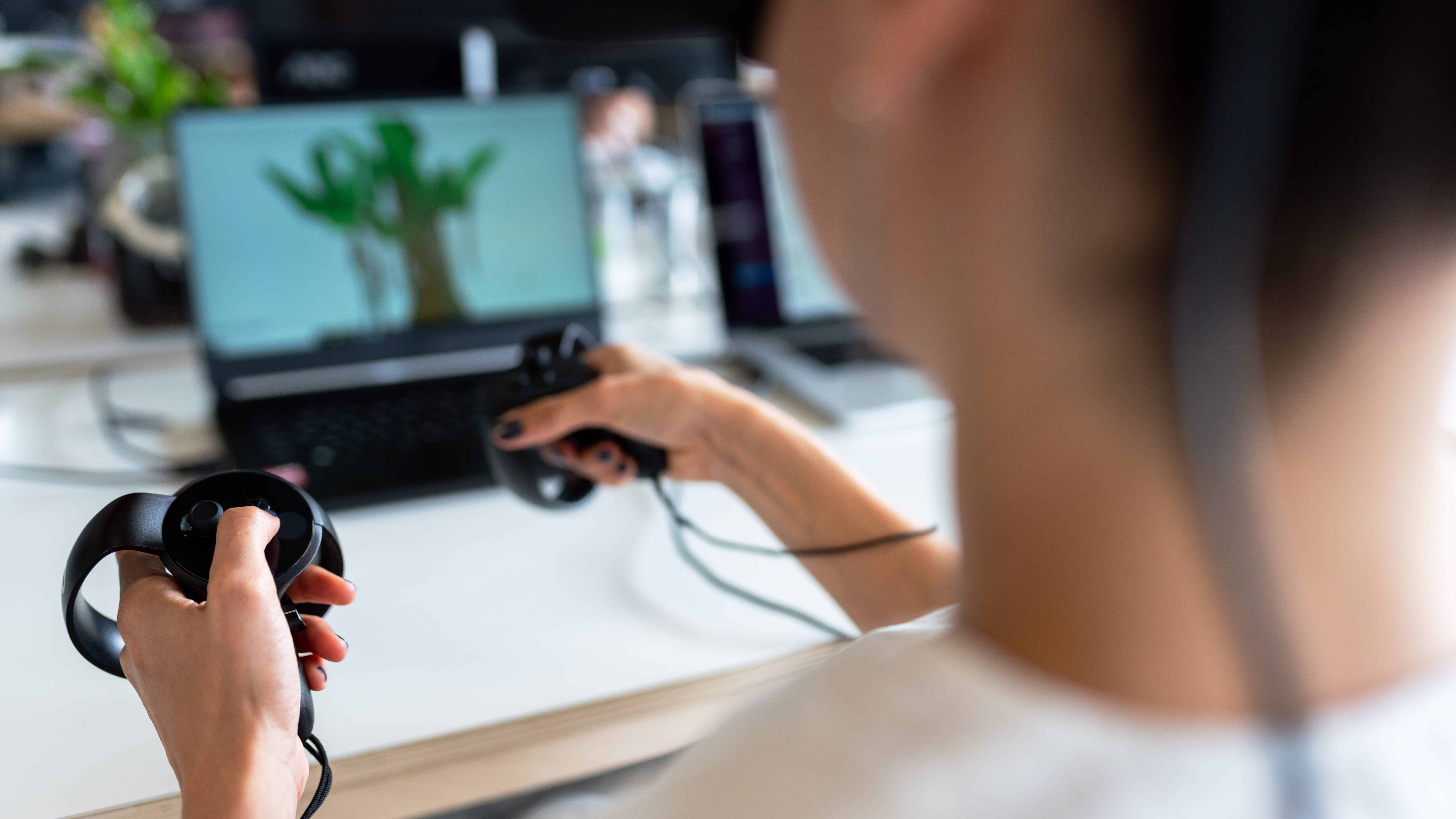In this interview, entrepreneur and investor Gaëtan Marti recounts how difficult it can be to find financing for a startup, how he bootstrapped Atracsys and eventually, despite different plans, sold it to a big MedTech company.

Co-founder and CEO, Atracsys
Gaëtan Marti co-founded EPFL spin-off Atracsys with Maurice Hälg in 2004. Atracsys, headquartered in Puidoux, Switzerland, develops optical tracking technology used in robotic-assisted surgery. In 2019, Smith & Nephew acquired Atracsys for an undisclosed amount. Gaëtan has a Ph.D. in medical image processing from EPFL. He invests in startups via Verve Ventures since 2017.
You studied computer science. How did you end up developing MedTech hardware?
I grew up with a Commodore 64 and was always fascinated by informatics. When I started studying computer science at EPFL, there were not so many startups around and the internet was still in its infancy. I developed an interest in programming firmware, and thanks to lecturer Charles Baur, an appetite to work on a project that could be turned into a company later. I had the opportunity to visit the Stanford Research Institute and worked together with people who later developed SIRI, Force Dimension, KB Medical and other projects. My Master’s thesis was about the use of stereo cameras to enable robots to see and move. When I came back to Switzerland, I decided to found the company 2C3D, with the vision of bringing augmented reality to laparoscopic surgeons. It was, in hindsight, much too early for this concept in 1999.
Was that the reason your first startup failed?
If you remember the time, it was the boom of internet startups, and it was quite easy to find business angels that would write a 100k check. As we wanted to be prudent and raise only what we deemed strictly necessary, we never had a lot of cash on the bank. That turned out to be the error. The investors pulled out of a financing round in September 2001, after the dot-com crash, and banks didn’t want to lend us money, that is why the company went bankrupt.
How did you muster the courage to try again and found another startup?
It was a difficult time, but fortunately, Charles Baur proposed me to come back at EPFL and to both work on a stereo camera prototype, and to do a thesis. This was when I met Maurice Hälg, who was a student at that time, and he asked me if I wanted to found the startup Atracsys, which we did in 2004.
“We said that we would be completely self-financed, no matter if this approach might take much longer.”
And what did you do differently this second time?
We said that we would be completely self-financed, no matter if this approach might take much longer. Luckily, we got some grants from CTI, which is now Innosuisse, to help us develop the product so far that we could sell it. At the time, our product wasn’t certified for medical use. This means that only a few universities would buy it for research purposes, but that was about it.
Without external financing or clients, how did you survive?
We had to get creative. Fortunately, we found a way to repurpose our stereo vision technology for events. You might remember the movie “Minority Report”, where Tom Cruise manipulates windows on a screen just with gestures. We met people from Tissot who said they wanted something like that for the Baselworld watch exhibition. We developed a gesture-tracking system, and this side project gave us a lot of visibility. In the end, we did over 300 events, including CES Las Vegas, for big clients. This cash infusion allowed us to develop fusionTrack, an optical tracking system dedicated for robotic-assisted surgery. It was 50 times better than similar systems on the market. What the system does is very rapid image processing. If a robot is used to help the surgeon to cut a bone, and the patient moves a bit on the table, the system adapts to that. This allows even less experienced orthopedic surgeons to assure a constant high quality and reduces the risk of injuries and misoperations. We certified it as a medical device component, and the big MedTech companies lined up and wanted to integrate it into their robotic systems, as they saw the difference it makes.
So everything went well in the end?
Almost. Scaling up a hardware company is not trivial. We already had delivered systems to clients to be used in their verification and validation process, which comes before they place a big order to commercialize the whole new system. These companies don’t want to pay upfront, but to build your production team, an after-sales team, and to order components, you need a lot of cash. We realized that we could not shoulder this financial risk on our own.
So you had to search for new sources of financing, even if you didn’t want to?
It was a frustrating experience. The banks wouldn’t give us a bigger credit line, they told us to get new equity investors on board. With a hardware company that is already 15 years old, we weren’t a classic venture capital case anymore, and the only people that talked to us were opportunistic and dishonest. One of our advisors, who had M&A experience, said to us that with the kind of investment offers we had on the table, it would be better for us to sell the company. We had a window of opportunity, as we were without real competition, and several big clients wanted to integrate our technology. When the stars align, you can’t wait.

Invest in Startups
As one of Europe’s most active venture capital investors, we grant qualified private investors access to top-tier European startups. With investments starting at EUR/CHF 10’000, you can build your own tailored portfolio over time and diversify across stages and sectors.
There were probably just a handful of potential buyers, how did you structure this process?
We didn’t just focus on strategic buyers. If you go about this process the right way, you should be open to a lot of different constellations and include private equity firms, distributors and others in it. With our M&A advisor, we reached out to maybe 200 potential buyers, discussed with 15 or so, and ended up with a handful in the final bidding stage.
What are your key learnings from the process?
The first point is maybe obvious, but still worth making. On the other side of the table, you’ll have M&A teams of a dozen people or more, and these are people who do nothing else all day. If you think you can go into such a room without having experienced external support from an M&A expert, you’re wrong. The second learning is that all the stakeholders in a company need to share the exit as a common goal. And third, it pays to have your house in order and be prepared. Because the time window you have will close again, no matter if you’re ready or not.
During the negotiations, you insisted on keeping the production in Switzerland and you also did not accept a restriction of clients in the future, which means that the buyer couldn’t deny their competitors your technology. Why were these two points so important for you?
The vision on which we built that company was to save a maximum of lives, not make an exit. Getting our technology in as many operating theatres as possible goes against one company having a monopoly on it. And to the first point, I have a lot of respect towards our employees, we spend most of our waking hours together, and they should be treated like members of a family. In the end, it was just a question of personal values.
“When I invest in startups, I want to strengthen the local economic development and create jobs for the future.”
Like many other entrepreneurs who have sold their companies, you now invest in startups. Why?
Because I am an entrepreneur and I have experienced first-hand how difficult it is to raise money. I would have loved to find investors who wanted, on a fair basis, to inject money into their region and enable startups to succeed. When I invest in startups, I want to strengthen the local economic development and create jobs for the future. It gives me much more peace of mind than speculation on the stock exchange.
How did you get to know Verve Ventures?
The first time I looked more closely is when Naviswiss raised money via Verve Ventures, a company with related technology. I found it cool that with Verve, you get to see a lot of investment opportunities without having to do your own due diligence, and have invested in several startups with Verve since then, mainly in Switzerland and the neighboring countries. I do also invest in startups by myself, but usually at a very early stage, when I can bring value to a startup through discussions and as a kind of sparring partner. When a young entrepreneur tells me that I have contributed useful ideas, I feel very grateful for that.
Written by
WITH US, YOU CANCO-INVEST IN DEEP TECH STARTUPS

Verve's investor network
With annual investments of EUR 60-70 mio, we belong to the top 10% most active startup investors in Europe. We therefore get you into competitive financing rounds alongside other world-class venture capital funds.
We empower you to build your individual portfolio.
More News
11.02.2021
“With startups, you invest in a memorable experience”
Entrepreneur, investor, and mother of three, Vvivi Hu has been part of Verve Ventures’ community for a long time. In this interview, she talks about how a venture capitalist mindset helped her become a better investor.
25.08.2020
Why invest in startups?
The high expected returns are an important reason why people invest in startups, but that’s not the only reason.
25.05.2020
“Invest in high-risk assets, but do so in a conservative way.”
From tech analyst to successful entrepreneur, from business angel to partner at a venture capital fund: David Sikorsky has a wealth of experience he shares in this interview. And since he has been investing in both Switzerland and Israel for a long time now, he offers an insightful explanation why the startup cultures in these countries are quite different.
Startups,Innovation andVenture Capital
Sign up to receive our weekly newsletter and learn about investing in technologies that are changing the world.




